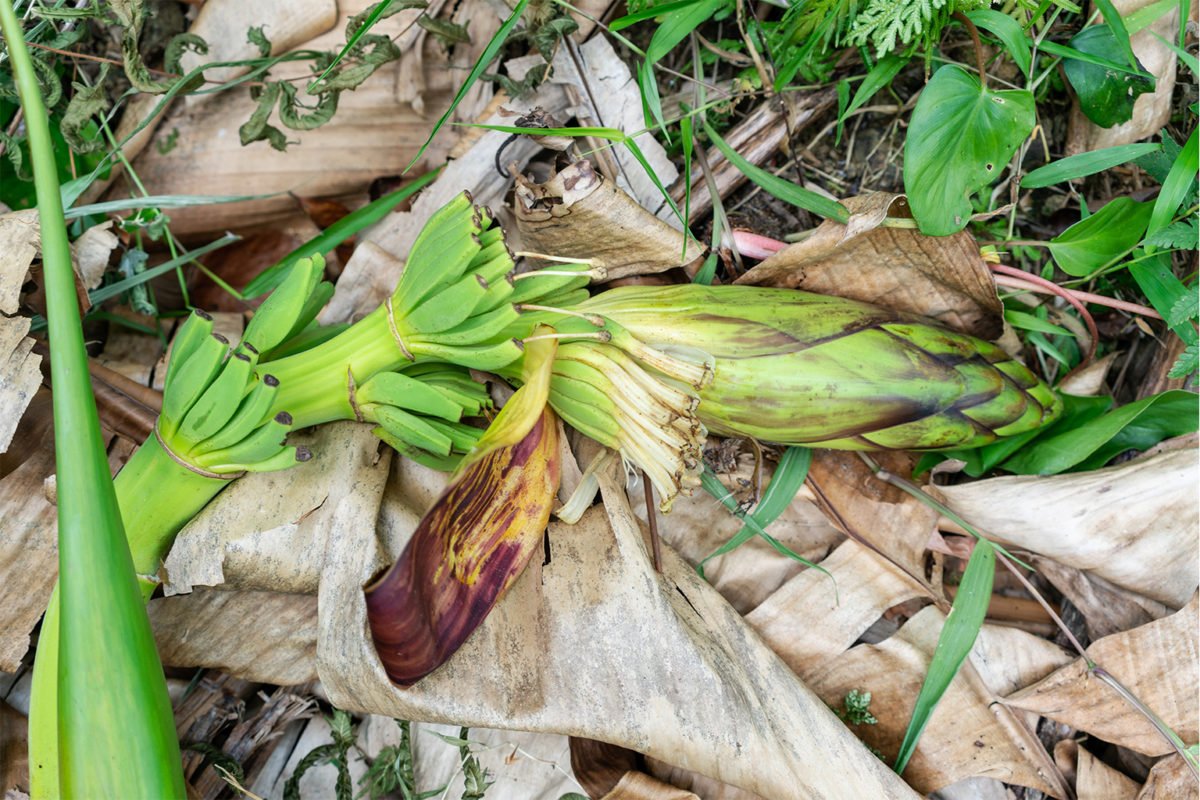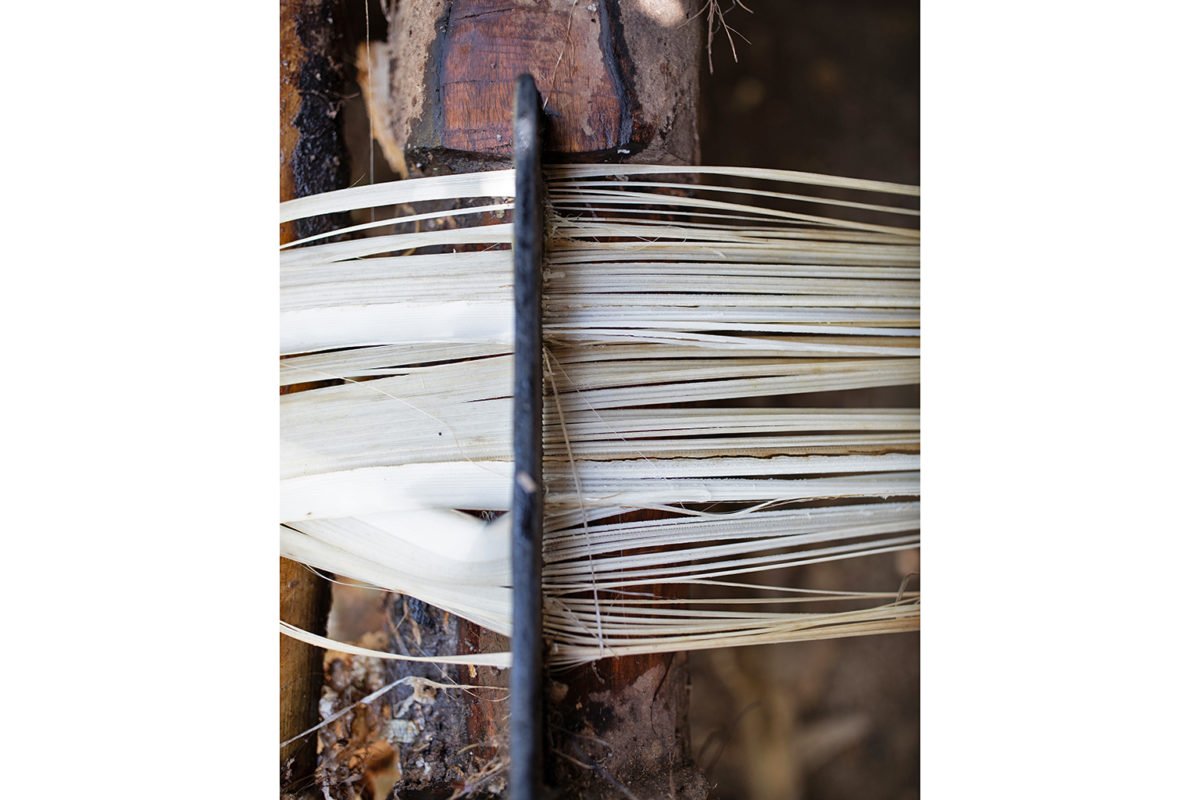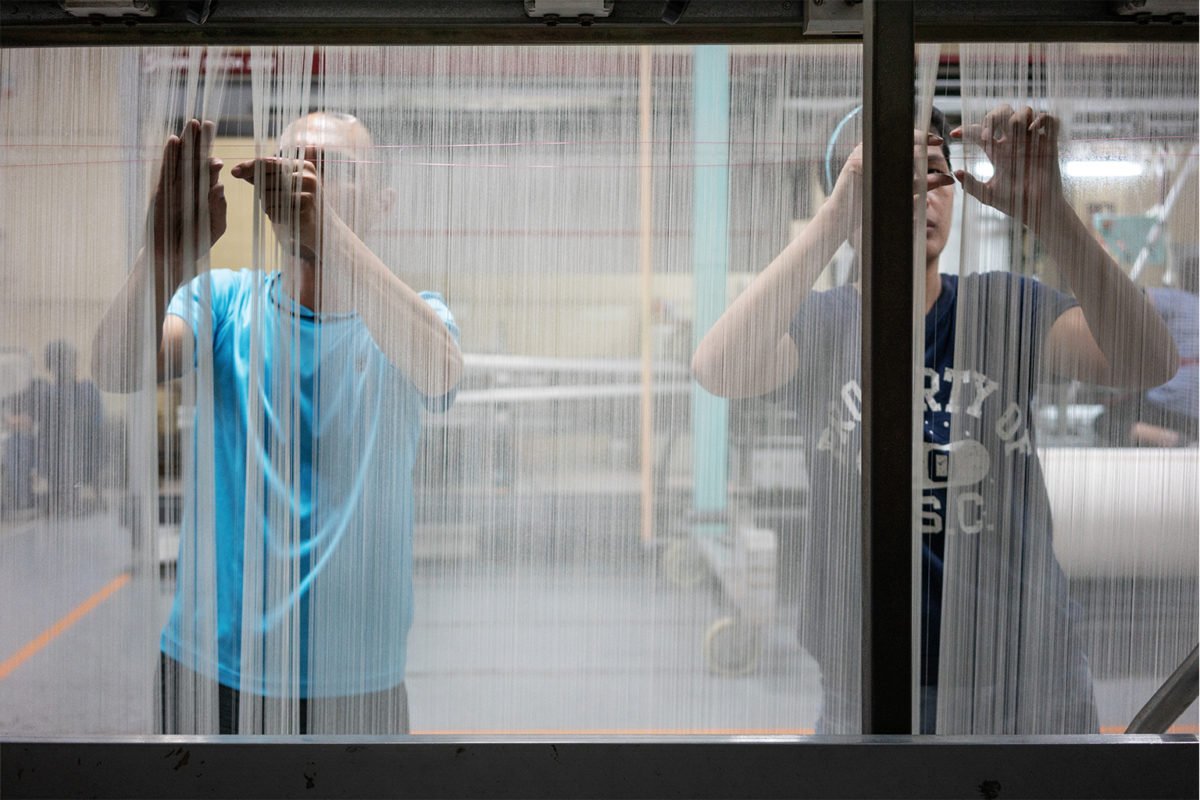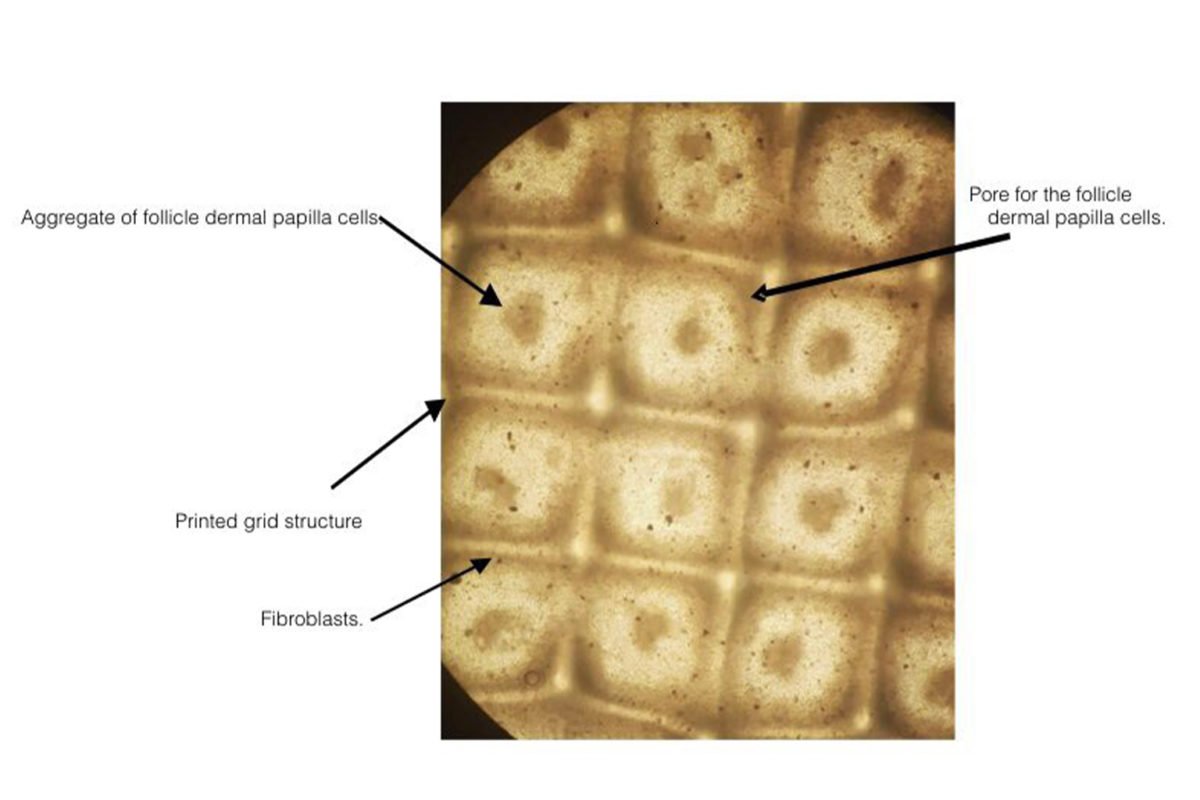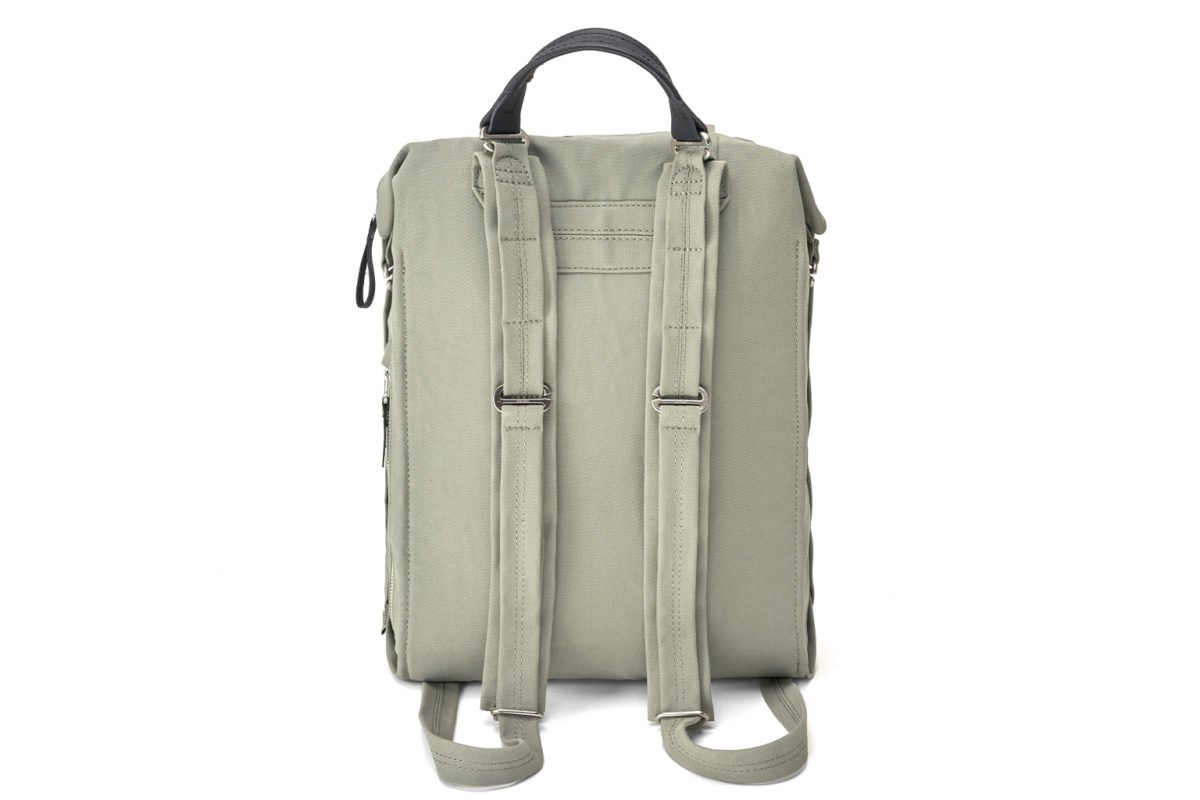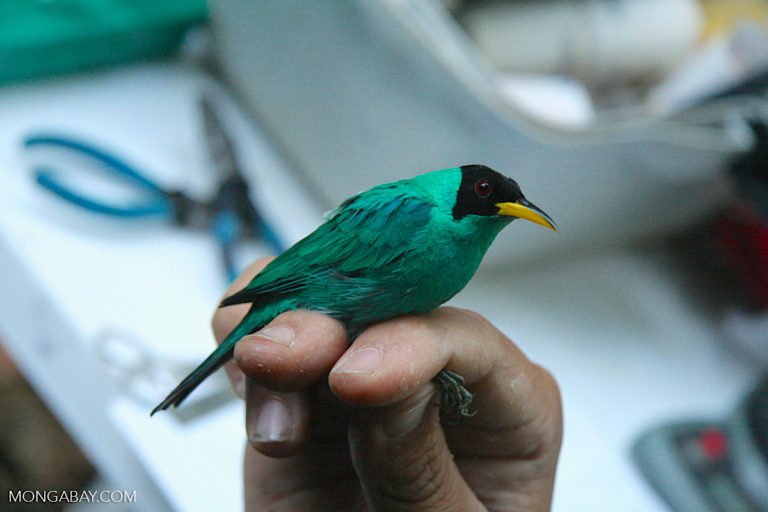- Innovators around the globe are achieving inspiring results using natural sources, traditional knowledge, and advanced biotechnology techniques to develop sustainable materials for the fashion industry, replacing fur, leather and skins, and slashing the impacts of one of the world’s most polluting industries.
- Although companies of this type still represent a tiny part of the global textile chain, such firms grew fivefold between 2017 and 2019. Executives of apparel companies recently surveyed say they “aspire to source at least half of their products with such materials by 2025.”
- This shift in production and corporate mentality is due to several factors, including pressure from animal rights activists and environmental organizations, along with consumer demand, comes as the climate and environmental crises deepen.
- “Sustainable materials are pivotal if we are to transform the fashion industry from one of the most polluting industries to one that is transformative, regenerative and more humane, caring both for the environment and the people it touches in its complex supply chain,” says fashion designer Carmen Hijosa.
In a globally interconnected world, textiles such as leather sourced from cattle, and wool sheared from sheep, have become a serious source of deforestation, other adverse land-use impacts, biodiversity loss and climate change, while fur farms (harvesting pelts from slaughtered mink, foxes, raccoon dogs and other cage-kept wild animals) have become a major biohazard to human health — a threat underlined by the risk fur farms pose to the current and future spread of zoonotic diseases like COVID-19.
But in a not-so-distant future, fashion biomaterials made from plant leaves, fruit waste, and lab-grown microorganisms may replace animal-derived textiles — including leather, fur, wool and silk — with implementation at first on a small but quickly expanding scale, but eventually on a global scale.
In fact, that trend is well underway. In less than a decade, dozens of startups have emerged, developing a range of biomaterials that, in addition to eliminating the use of animal products, incorporate sustainable practices into their production chains.
Not all these textile companies, mostly based in Europe and the United States, have fully achieved their goals, but they continue to experiment and work toward a new fashion paradigm. Among promising discoveries: vegan bioleather made with mycelium (the vegetative, threadlike part of fungi), and bioexotic skins made from cactus and pineapple leaves, grape skins and seeds, apple juice, banana stalks and coconut water. There are also new textiles based on algae that can act as carbon sinks, and vegan silk made from orange peel.
It’s all part of a promising sustainable textile revolution that has the potential to stylishly clothe both the high- and fast-fashion customer.
According to a 2019 report, “Fashion’s New Must-Have: Sustainable Sourcing at Scale,” researched by the McKinsey & Company consulting firm, sustainable materials only represent a small fraction of global fashion production today, but recorded a stunning “five-fold increase [in growth] over the past two years.”
Seventy-four such companies are listed in “The State of the Industry Report: Next-Gen Materials,” released last year by the Material Innovation Initiative (MII), a California-based nonprofit that promotes animal-free materials. Of that total, 42 firms were established since 2014. The number of companies is even longer, though. Firms like Post Carbon Lab (U.K.), Chip[s] Board (U.K.), and SeaWear, for example, aren’t listed.
These pathfinding multidisciplinary companies — staffed by designers, biochemists, genetic and material engineers, biologists and textile specialists — in addition to being suppliers of textiles, clothing and accessories to manufacturers, have also been partnering with major fashion brands to further develop their research and gain scale. Awards created by conglomerates such as the H&M Foundation and the Kering Group provide grants and technical support for projects in their early stages.
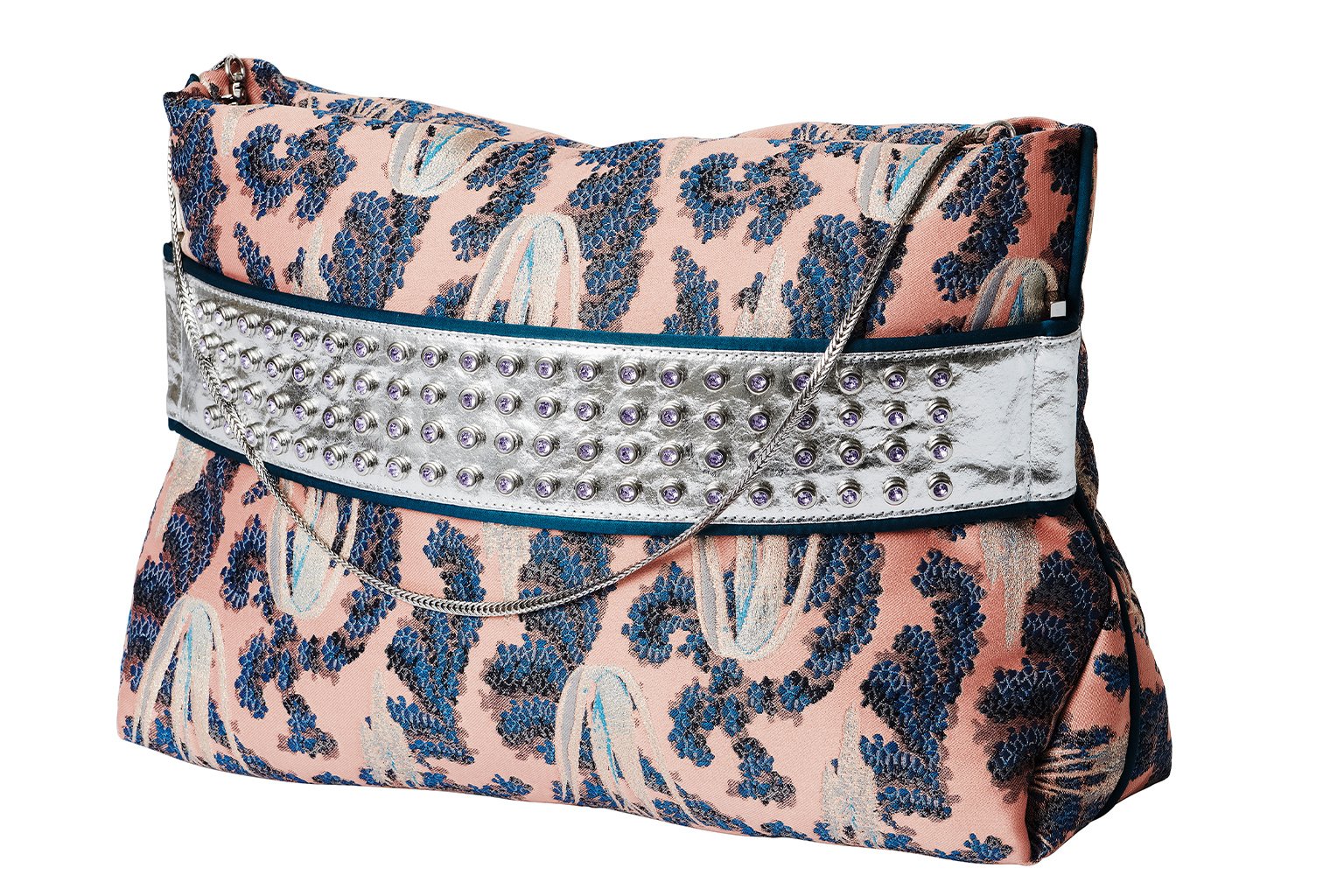
Sustainable fashion’s environmental implications
The evolution of sustainable biomaterials is largely a response to the need to reduce the environmental impact of the fashion industry, one of the worst planetary polluters. “The fashion industry is responsible for 10% of annual global carbon emissions, more than all international flights and maritime shipping combined [and responsible for] around 20% of worldwide wastewater [that] comes from fabric dyeing and treatment,” according to the Ellen MacArthur Foundation.
The fashion industry is also connected to Amazon deforestation. The share of the Brazilian Amazon involved in the country’s leather production has been growing since 2000, when it was only 7%. That jumped to 27% in 2010 and 43% in 2020.
More than 100 global brands “are working with manufacturers and tanneries that are sourced from companies with links to cattle raised on recently deforested Amazon land,” according to a study released in November by Slow Factory, an NGO. Among them are Ralph Lauren, Tommy Hilfiger, Prada, Nike, Zara, H&M, Louis Vuitton, Coach and Tory Burch.

In fact, it was a visit to a leather tannery in the Philippines — his first ever in 15 years as a designer and consultant on luxury leather products — that convinced Carmen Hijosa to never work with animal skins again.
As part of their industrial process, tanneries need to prevent newly made leather from decomposing by altering its protein structure using a potent chemical cocktail containing potential human carcinogens, including formaldehyde and azo colorants.
Hijosa’s 1993 visit to the Philippine tannery spurred her research into leather alternatives. While still in the Philippines, the Spanish designer learned of an old local fashion tradition: the use of pineapple-leaf fibers to make handwoven textiles. So Hijosa focused her research on pineapple’s potential and went back to school to study textiles. In 2013, she founded a London startup, Ananas Anam. The next year, at age 62, she gained her Ph.D. The result of her journey is Piñatex, a trademarked fabric made from waste pineapple leaves and already sold in 80 countries.
“Sustainable materials are pivotal if we are to transform the fashion industry from one of the most polluting industries to one that is transformative, regenerative and more humane, caring both for the environment and the people it touches in its complex supply chain,” said Hijosa. “It is our responsibility as material designers and manufacturers to develop living systems that make this change possible.”
Piñatex still has a challenge to overcome: While its finishing coating is 50% bio-based, the other 50% is made up of a petroleum-based resin applied to strengthen the material. Ananas Anam is currently working with a chemical company to make a fully bio-based coating.
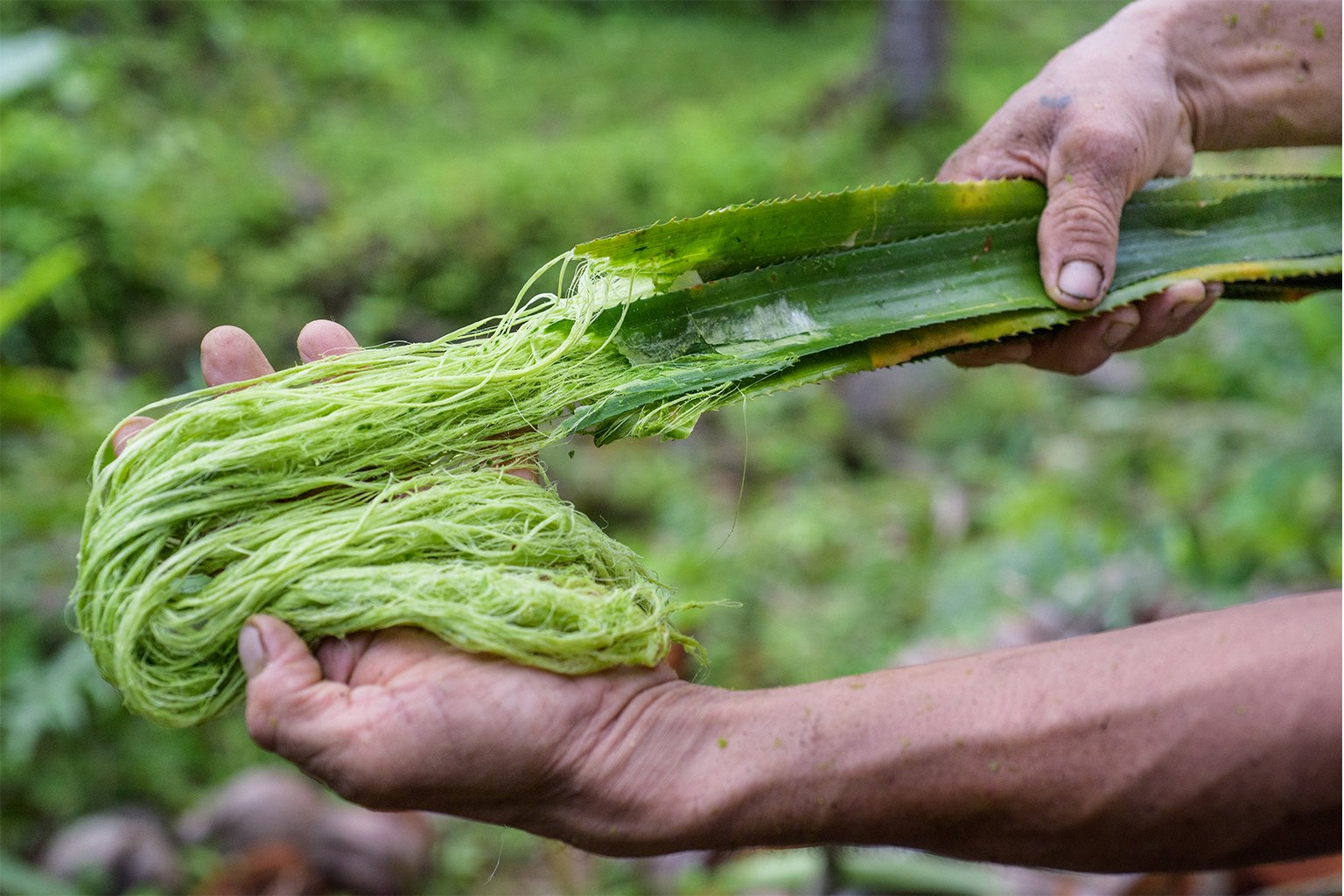
Plant substitutes for leather and fabrics
After working with organic cotton, hemp and bamboo fibers, the Swiss fashion company QWSTION learned about abacá, a plant in the banana family also native to the Philippines, with strong fibers. Used by locals to make textiles since before Europeans arrived in the 1500s, “the fiber had good potential to become a material for outdoor clothing and accessories,” Hannes Schönegger, QWSTION’s CEO and co-founder told Mongabay.
According to Schönegger, abacá is produced using permaculture, so is grown surrounded by other plant species rather than existing as a monoculture. “Very often it is cultivated with cocoa trees and bigger plants that give shade. [Only] the side stems from the banana plant are chopped off to extract the raw material, so it keeps on growing for 30-40 years.”
It took three years of research in partnership with a yarn specialist and a weaving manufacturer, both based in Taiwan, to create Bananatex, launched in 2018. In addition to accessories already made with the biodegradable fabric and sold in QWSTION’s flagship stores, other brands and retail partners are creating prototypes using the abacá-derived textile, with some products likely available to consumers soon, said Schönegger.
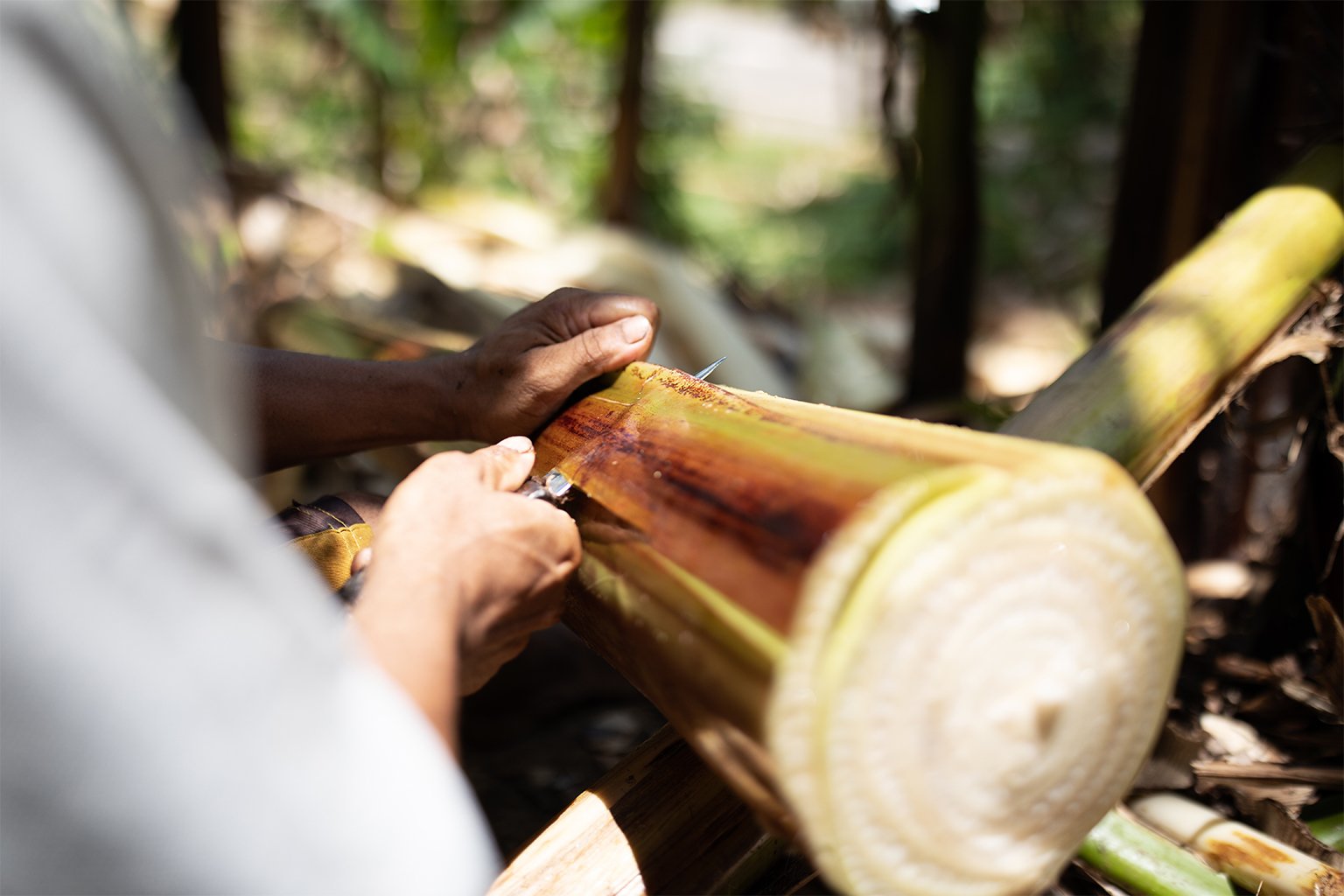
The company is also currently testing bacteria dyeing as an alternative to digital print, a method used in making handbags. “We try to use the least harmful dyes that are available in industrial quantities. However, dyeing is an area that definitely needs improvement, added Schönegger. Synthetic chemical textile dyes have a notorious history as pollutants.
Another major issue confronting Bananatex and other companies is the environmental impacts of the global fashion supply chain. In the case of Bananatex, its product is sourced in the Philippines, moves to Taiwan for processing, then to China for manufacture, and finally arrives in Europe to be sold in stores and also over the Internet. That globe-trotting itinerary generates a lot of greenhouse gas emissions.
“In an international economy — and the textile industry is one of the most globalized areas — it is best to produce close to where materials grow and distribute the [finished] products afterwards. Because of that, Bananatex was born from the idea of creating a supply chain with short distances in Asia,” said Schönegger. “Things have to be transported at some point. And a closer look often reveals unexpected facts: Transporting a backpack from Hong Kong to Hamburg by ship creates less CO2 than from Portugal to Hamburg by truck.”

Fur from a petri dish
Mink farms, long a target of animal rights activists, generally try to keep a very low profile. But that has become increasingly difficult since the arrival of the COVID-19 pandemic. The SARS-CoV-2 virus infected U.S. and EU fur-producing mink farms in 2020, underlining the potential of those facilities for transmitting zoonotic diseases, and leading to calls by epidemiologists and public health experts for them to be shut down.
“Any time we can avoid housing animals in high-density settings, we diminish the risk of [animal-to-human, and human-to-wildlife] spillover events for potential pathogens. Raising animals for fur can certainly represent a high-density scenario. So if [alternatives to the] fur industry are successful, they could reduce fur farming and thus emerging infection disease risk,” Michael Oglesbee, director of the Infectious Diseases Institute in Columbus, Ohio, told Mongabay.
Current alternatives to animal fur are made mostly from recycled polyester, an entirely petroleum-based fiber that contributes to climate change. A potentially more environmentally friendly option is Koba, a brand owned by the Chinese company Ecopel, whose faux fur uses a synthetic fiber manufactured by chemical giant DuPont, but which is made from corn byproducts resulting from biofuel production and petroleum-derived terephthalic acid. Ecopel claims a 63% greenhouse gas emission reduction for its faux fur. Contacted by Mongabay, Ecopel did not respond for comment.
Some startups are paving the way for faux fur production through biotechnology, a field that modifies living organisms to develop a variety of products. One such firm is the Dutch company GENEUSBIOTECH, founded in 2017 by Henri Kunz, a serial biotechnology entrepreneur, and Maria Zakurnaeva, who worked in the fashion industry.
When Kunz and scientist Sundar Pattabiraman produced human hair follicles in vitro, Zakurnaeva had a revelation: “Why not take advantage of this technology to produce fur, and thus avoid the death of animals?” The research team expanded its work and is now even developing wool grown without sheep. Its biomaterial fur and wool products are being made under the FUROID brand.
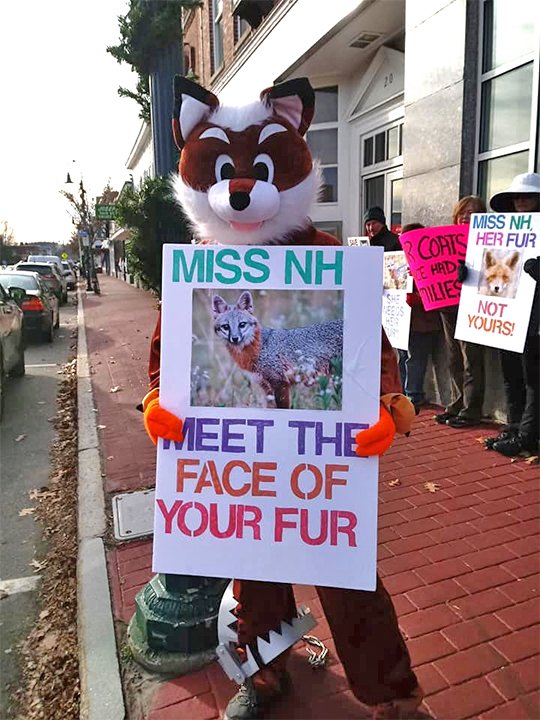
“We are at a stage where we have produced small organoids, a three-dimensional mass of tissue, by growing induced Pluripotent Stem Cells (iPSCs),” Pattabiraman, FUROID’s chief scientific officer, told Mongabay. “These cells have been proliferated to make hair-like protrusions coming out of them. But more extensive research needs to be performed to further this project in terms of reproducibility and to [achieve] a larger scale.”
The process uses stem cells, from which all other body cells with specialized functions are generated, which are obtained by biopsy from living mink and Merino sheep. In a next step, those cells are cultured and reprogrammed into iPSCs to make fur hair follicles.
“We use a maximum of five punch biopsies per animal, after approval from an ethics committee and under supervision of a veterinary doctor, who performs the anesthesia. All animals are kept as pets and monitored by experienced staff. We own five sheep at a university farm in New Zealand and five minks. They are sufficient to produce an endless supply of cell lines,” said Kunz. “The life expectancy of our donor animals is high, especially sheep, and we spare no effort and costs to give them the best life they deserve.”
GENEUSBIOTECH reports that its FUROID project has received a Horizon Europe grant from the EU in excess of 4 million euros ($4.4 million), and is also being supported financially by an angel donor, family and friends. The company is in talks with industry stakeholders as possible investors. The firm intends to eventually use more species as donor animals to create its biomaterials, including sable, fox and even crocodile.
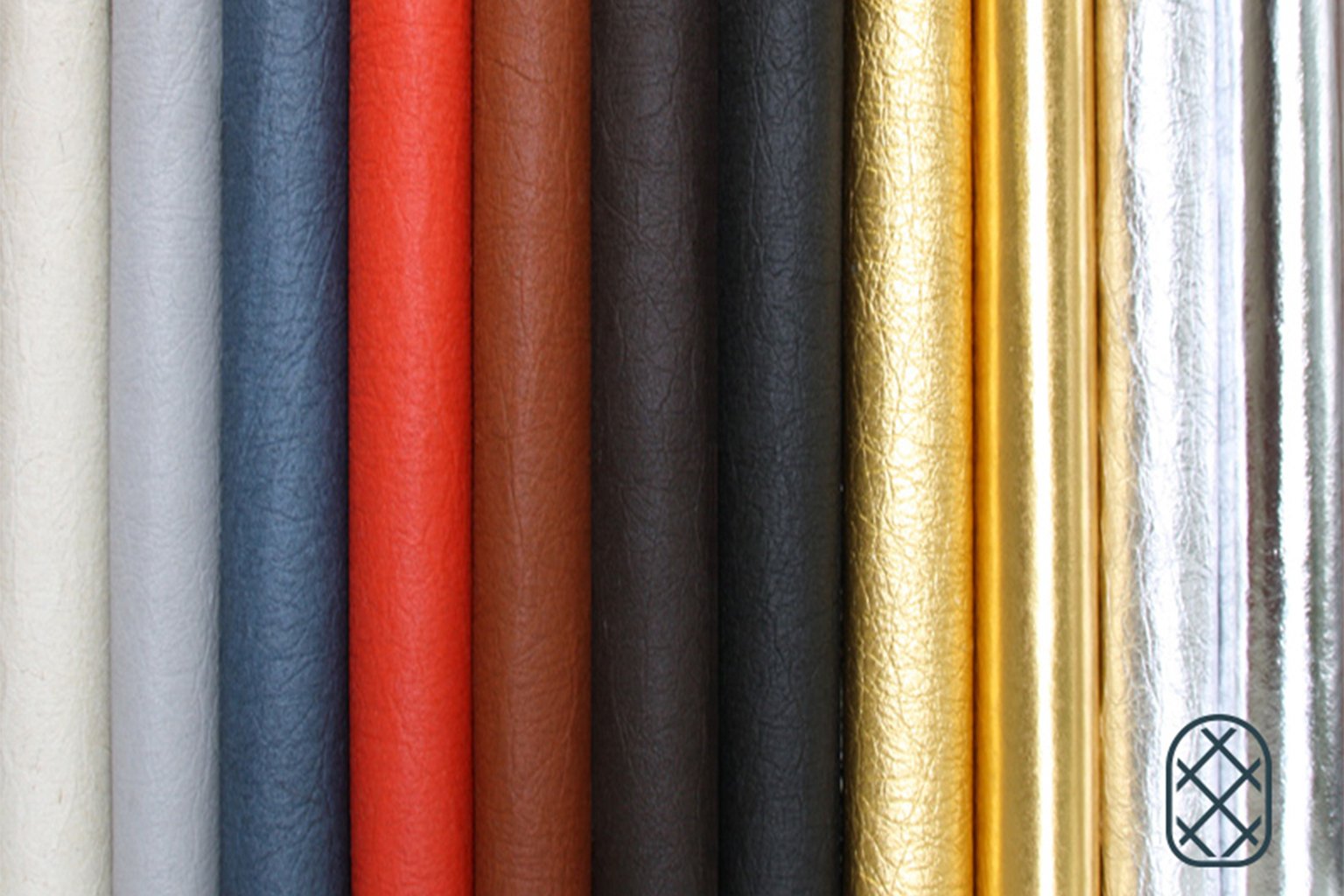
Fashion bounty from the sea
Ocean species are also becoming a source of sustainable fabrics, says Mike Allen, an associate professor in the College of Life and Environmental Sciences at the University of Exeter, U.K.
“Marine microbes … evolved in the oceans over a billion years before [they did] in the terrestrial environment. Because of that, the oceans are teeming with metabolic diversity, which can offer solutions to many of our current and future problems. You name a problem, there is a microbe out there that can help overcome it,” Allen told Mongabay.
The marine biotechnologist explained the advantages of biological modes of production over more traditional ones: “Physical [production] processes generally demand a lot of energy (heat and pressure), while chemical ones are reliant on bulk commodity synthetics [which may be toxic] … As a result, fashion textiles are restricted in their nature.
“Biological solutions to materials, on the other hand, are usually smarter,” Allen continued. “They exploit living organisms to do the hard work with a lower energetic input of manufacturing, and have properties that you can control and engineer for your particular application. Strength, grip, biodegradability, water resistance, antimicrobial, color, luminescence, fluorescence, self-cleaning, self-repairing, self-lighting: You are limited only by your [own] imagination.”
Vegan leather and exotic skins:
Mylo (U.S.): Biotechnology company Bolt Threads has developed a textile derived from mycelium, the root structure of fungi, and processed into leather-like sheets. Mylo is certified 50-85% bio-based, though it still employs chemicals in the tanning and dyeing process.
Desserto (Mexico): The Adriano Di Marti company cultivates nopal cactus in the state of Zacatecas, and it is the source of a new fashion material launched in 2019. Nourished by rainwater, the plant’s leaves are cut just twice a year, while no toxic chemicals are used in manufacture.
Vegea (Italy): Grape skins, seeds and stalks discarded during wine production have been used by this company to make vegetal leather since 2016. Its website states that no toxic solvents or heavy metals are involved in its processes.
Malai (India): This company collects coconut water discarded by processing plants that use only the white flesh from the tropical fruit. This natural liquid, once disposed of in the local sewage system, causing destructive soil acidification, is now sterilized and serves as food for a bacterial culture. This growth process results in a sheet of cellulose jelly, which is later reinforced with natural fibers and resinous ingredients, making a product similar to leather.
Yarns and molded fashions:
Alga-Life (Germany): Founded in 2016, this firm makes threads and textile dyes by purifying proteins from algae, which are then blended with natural ingredients such as pomegranate rind and juniper needles. The system only needs sunlight and water to operate, and the process creates no waste.
MycoTEX (Netherlands): NEFFA makes customized clothing by growing a compostable mycelium textile, which, once harvested, can be shaped within a 3D mold into finished apparel. Once dry, the garment is ready to wear, having eliminated multiple traditional manufacturing steps such as the spinning of yarns and weaving of cloth. The process uses only 0.5% of the water consumed in conventional cotton production.
Animal-free wool:
WOOCOA (Colombia): A group of students from the University of the Andes, in Bogotá, developed a substitute for wool that is 100% biodegradable, winning the 2018 Biodesign Stella McCartney and PETA Prize for Animal-Free Wool. They used coconut and hemp fibers, treated with enzymes extracted from oyster mushrooms, to create a bio-based regenerative animal-free wool.
Consumers driving sustainable fashion movement
As with any business, it is consumer demand and profits that are driving the conversion from wild and domestic animal-sourced fashion materials, to plant and other biologically based materials.
This seismic shift in consumer desires has become clear in recent news: For example, in 2021, after more than 25 years of partnership, the Miss New Hampshire state beauty competition in the U.S. ended its relationship with the New Hampshire Trappers Association, a promoter of wildlife trapping that long donated a fur coat to the winner.
“Former contestants spoke publicly against the obligation to accept a fur coat as part of the prize. That antiquated tradition helped perpetuate the use of body-gripping traps, which are still allowed in the state,” Kristina Snyder, an animal rights activist and co-creator of the New Hampshire Citizens Against Recreational Trapping (NHCART) website, told Mongabay.
At the international level, trendsetting Elle magazine announced in 2021 that it is banning fur from all its 45 global editions, printed and online. According to Elle senior vice president and international director Valeria Bessolo Llopiz, “[A] fur-free future is a great opportunity to increase awareness for animal welfare, bolster the demand for sustainable and innovative alternatives and foster a more humane fashion industry.”
Banner image: Piñatex fibers in the drying stage. The pineapple leaf fiber has great tensile strength and flexibility. Image courtesy of Riikka Juva/Ananas Anam.
Citation:
Lellis, B., Fávaro-Polonio, C. Z., Pamphile, J. A., & Polonio, J. C. (2019). Effects of textile dyes on health and the environment and bioremediation potential of living organisms. Biotechnology Research and Innovation, 3(2), 275-290. doi:10.1016/j.biori.2019.09.001
FEEDBACK: Use this form to send a message to the author of this post. If you want to post a public comment, you can do that at the bottom of the page.


